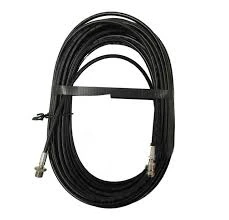Repairing Leaks in Power Steering Lines for Optimal Performance and Safety
Power Steering Line Leak Repair A Comprehensive Guide
The power steering system is a critical component of modern vehicles, providing the necessary assistance to make steering effortless and safe. One common issue that many drivers encounter is a leak in the power steering lines. This can lead to decreased performance and potentially dangerous driving conditions. Understanding how to identify and repair a power steering line leak is essential for maintaining vehicle safety and performance.
Identifying a Power Steering Line Leak
A power steering line leak may manifest in several ways. Common symptoms include
1. Steering Difficulty If you notice that steering has become stiff or requires more effort, it could be a sign of low power steering fluid levels due to a leak.
2. Fluid Puddles Spotting a reddish-brown fluid under your vehicle is often a sign of power steering fluid leaking from the lines.
3. Noise from the Steering Wheel A whining or moaning noise when turning the wheel can indicate that the power steering pump is working harder due to insufficient fluid levels.
4. Warning Lights Some vehicles may display a warning light on the dashboard when there is an issue with the power steering system.
Common Causes of Power Steering Line Leaks
Leaks in power steering lines can arise from several factors
- Age and Wear Over time, power steering hoses can become brittle and develop cracks, leading to leaks
. - Corrosion In vehicles exposed to harsh environments or those lacking proper maintenance, corrosion can weaken the metal lines.- Improper Installation If the power steering lines were not installed correctly, they might rub against other engine components, causing wear and tear.
power steering line leak repair

- Damaged Seals Seals and fittings can degrade, leading to leaks at connection points.
Repairing a Power Steering Line Leak
Repairing a power steering line leak generally involves the following steps
1. Diagnose the Leak Before you start any repair work, it’s essential to identify the source of the leak. This can often be done through visual inspection. Look for wet spots on the power steering lines and connections.
2. Gather Tools and Materials You will need a wrench set, new power steering fluid, replacement lines (if necessary), hose clamps, and possibly a sealant or rubber grommets if you’re dealing with minor leaks.
3. Safety First Ensure the vehicle is on a flat surface, turn off the engine, and allow it to cool down. It’s also wise to disconnect the battery to avoid any electrical issues during the repair.
4. Replace or Repair Lines - Replacing If the line is severely damaged, it is best to replace it altogether. Loosen the fittings with a wrench and remove the old line. Install the new line, ensuring it fits snugly and securely. - Repairing For smaller leaks or cracks, a temporary fix might involve using hose clamps and sealant. Make sure to clean the area thoroughly before applying the sealant.
5. Refill Power Steering Fluid After making the necessary repairs, fill the power steering reservoir with the appropriate type of power steering fluid.
6. Check for Leaks Start the engine and turn the wheel slowly from lock to lock. This action helps circulate the fluid and allows you to check if there are any remaining leaks. If you notice any new leaks, you may need to revisit your connections or consider further repairs.
Conclusion
Repairing a power steering line leak can be a straightforward process if approached methodically. Regular maintenance, including checking the power steering fluid levels and inspecting hoses for wear, can help prevent leaks from occurring in the first place. However, if a leak does happen, timely repairs are crucial for ensuring safety and maintaining the integrity of your vehicle’s steering system. Always consult a professional if you're unsure about any steps involved in the repair process.
-
Reliable Brake Line Solutions for Your VehicleNewsJun.05,2025
-
Quick Fix for Leaky Air Conditioning HosesNewsJun.05,2025
-
Powerful Sewer Jetting Solutions for Tough ClogsNewsJun.05,2025
-
Power Steering Hose Problems SolvedNewsJun.05,2025
-
Hose Protectors That Actually WorkNewsJun.05,2025
-
Essential Hose Connectors for Every HomeNewsJun.05,2025

